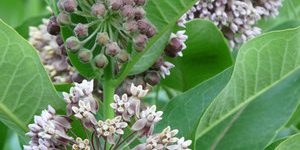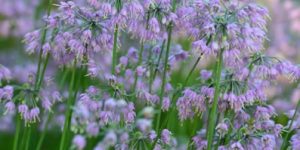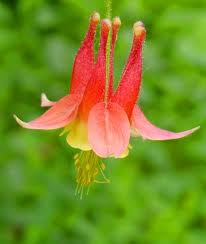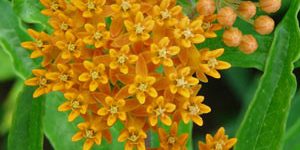Explore our selection of Butterfly Host and Nectar Plants! The Butterfly Gardens to Go collection was developed by Michigan Native Butterfly Farm. We specialize in plants for rearing indigenous butterfly species, butterfly gardens and the promotion of Monarch Waystations. Our diverse product line was designed to help create habitat which promotes the life cycle of butterflies ensuring that future generations will prosper. Each plant has been carefully chosen to support the most common North American butterflies through each stage of development.
Our collection includes an extensive variety of native Milkweed plants for a variety of growing conditions and native habitat throughout the United States.
We have an excellent selection of butterfly host plants, butterfly nectar plants and native plants that support the butterfly life cycle.
The nectar sources we have selected are proven butterfly favorites in our own gardens and the flight houses where we rear our butterflies.
We are pleased to offer a collection of ‘Petite Perennials’ that are perfect for small garden spaces or gardens that are already established and just need a touch of color or a fun new plant!
Did you know that butterflies are important pollinators? With diminishing butterfly populations you can make a difference by planting butterfly and pollinator friendly gardens.
Our butterfly host and nectar plants are grown without the use of harmful pesticides.
Plants are grown in 4.5″ square pots unless otherwise specified.
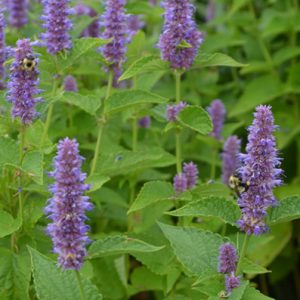
Agastache foeniculum – Lavender Hyssop
Anise Hyssop has very showy flowers, fragrant foliage and seems to be of little interest to deer. It self seeds readily and often blooms the first year. New seedlings are hardy and can be transplanted easily. It's a bee, hummingbird, and butterfly magnet and makes an excellent addition to herb gardens, borders, perennial gardens, and prairies. When the leaves of the Anise Hyssop are crushed they smell like licorice and have been used to make tea and cold remedies. Other common names in use: Lavender Hyssop or Blue Giant Hyssop
Available May to Mid May.
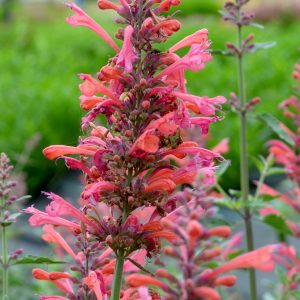
Agastache Kudos Coral
Amazingly free flowering and easy to grow. ‘Kudos Coral’ has an impeccable habit and long lasting, glowing color. Warm, coral colored plumes are dense with a sweet honey-mint scent. A real standout in mixed containers, or as a border plant.
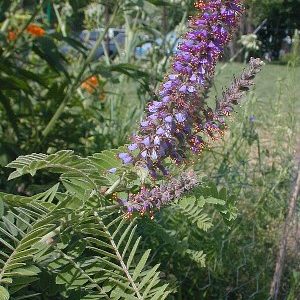
Amorpha canescens – Leadplant
Host Plant – Silver Spotted Skipper
This is a lovely, and very long lived shrub of the prairie. The deep purple flower spikes rise above the silver-gray foliage to create a striking bloom display in June. The very deep taproot allows this plant to be very drought tolerant. Butterflies are attracted.
Available May – Mid May
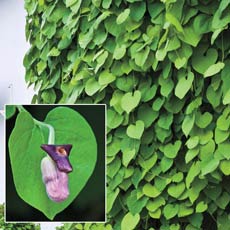
Aristolochia macrophylla – Dutchman’s Pipe
Host Plant – Pipevine Swallowtail
Culture
Easily grown in average, medium, well-drained soil in full sun to part shade. Prefers rich, moist soil. Intolerant of dry soils. Cut back in late winter to control growth. Grows well from seed.
Noteworthy Characteristics
This deciduous, woody, climbing vine is an eastern American native which typically occurs in the wild in rich, moist woods and along streams. Can rapidly grow to 20-30′. An old-fashioned favorite that is grown for its large, heart-shaped, densely overlapping leaves (6-12″ long) which can quickly cover an arbor or trellis with attractive, glossy, deep green foliage. Commonly called Dutchman’s pipe because the unusual, 2″ long, yellowish-green flowers (each flaring at the calyx mouth to form 3 brownish-purple lobes) superficially resemble Dutch smoking pipes. Although the flowers make interesting conversation pieces, they are usually hidden by the dense foliage and are somewhat inconspicuous.
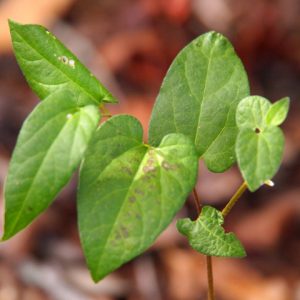
Aristolochia serpentaria – Virginia Snakeroot
Virginia Snakeroot is one of several species of vines known as “pipevines.” This species grows up to 18 inches tall and has thin, heart-shaped leaves. The stems of the plant tend to zig-zag.
Aristolochia serpentaria is a host plant to the beautiful Pipevine Swallowtail butterfly. It has a wide distribution throughout the United States and is a good shade ground cover for native gardens.
Grown in 4.5″ square pots.
All of our plants are grown without harmful pesticides.
Shipping begins Mid-May.
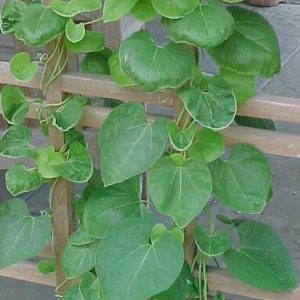
Aristolochia tomentosa – Dutchman’s Pipe
Host Plant – Pipevine Swallowtail
Aristolochia tomentosa, commonly known as Wooly Pipevine, is a species of Dutchman’s pipe. It is a large, woody and twining vine native to the Midwest and Southeast. It can be found on stream banks, flood plains and bottomlands and is known to climb trees and shrubs, growing to a height of 20-30’ tall, making it an excellent choice for arbors, trellises and fences. The leaves of this species are quite large, heart-shaped and hairy. Aristolochia tomentosa is a larval plant for the Pipevine Swallowtail butterfly. All plants are grown without pesticides and are safe for developing larvae. Ships in 4.5″ perennial pot.
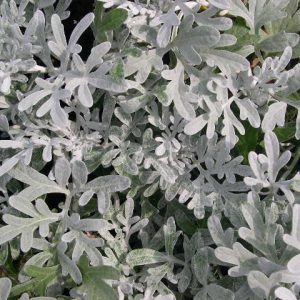
Artemisia stelleriana – Silver Brocade
Host Plant – American Lady
Features to Note:
- Deer Resistant
- OK in containers – see FAQ for overwintering
- Scented Foliage
- Hot Dry site tolerant
- For a sunny spot
General Information:
Artemisia are prized for their aromatic silver leaves, excellent texture and vigorous growth. This perennial does not flower conspicuously but are used for their contrasting foliage. Also excellent in flower arrangements.
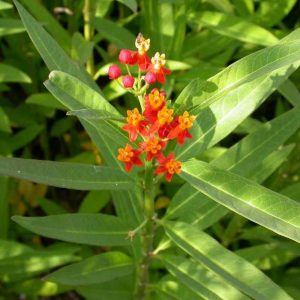
Asclepias curassavica – Tropical Milkweed
Tropical Milkweed, also known as Blood flower, is a tender evergreen perennial in the dogbane and milkweed family. It is native to South America, but has naturalized worldwide in many tropical and subtropical areas. It has a much longer flowering period than the perennial milkweeds that are winter hardy in Michigan. Showy red-orange flowers bloom late spring through late autumn except in USDA Zones 9-11 where it is winter hardy. Grows best in light, rich, evenly moist, well-drained soil in full sun. Will tolerate light shade and some soil dryness. Hummingbirds, butterflies and bees are attracted to the flowers. Monarch butterflies lay eggs on this plant and the resulting larvae (caterpillars) use the plant leaves as a food source. Flowers are followed by long, narrow seed pods (3-4” long) which split open when ripe releasing silky tailed seeds for dispersal by wind. Stems and leaves exude a milky sap when cut or bruised. Plants can be poisonous to livestock. Consider wearing gloves when working with these plants because the milky sap is poisonous if ingested and can be toxic to human skin.
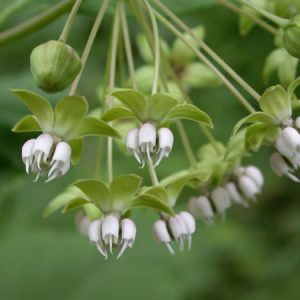
Asclepias exaltata – Poke Milkweed
Poke Milkweed is native to Michigan and can also be found throughout the eastern portion of the United States and Canada. It is most often found at the edges of forests and upland woods and is one of the few milkweeds that prosper in shaded conditions. Tall and elegant with drooping flowers that are white with pink accents and extremely fragrant, this milkweed is a popular nectar source in addition to being a host plant for the Monarch butterfly. This is a non-aggressive milkweed and once established, plants are known to survive for decades.
Available – May 2017
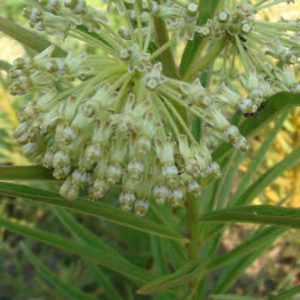
Asclepias hirtella – Tall Green Milkweed
Asclepias hirtella Tall Green Milkweed is a Michigan native although it is considered threatened in the state. Tall Green Milkweed is found throughout the Tallgrass Prairie region in open areas, usually in prairies or remnants of prairies and throughout the midwest. Though not as well known as other varieties of milkweed, Tall Green Milkweed distinguishes itself with abundant clusters of green-white flowers that attract many butterflies and bees.
Other Common Names in use include Green Milkweed.
Available May 2017
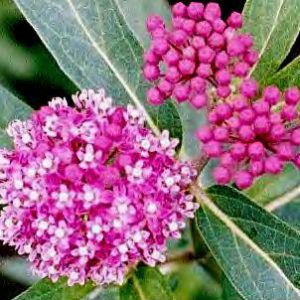
Asclepias incarnata – Cinderella Milkweed
‘Cinderella’ is a cultivar of native Asclepias incarnata (Swamp Milkweed) featuring pale pink, vanilla scented flower clusters. This milkweed occurs throughout most of the United States. It is a tall plant found in moist habitats such as wet meadows, floodplains, riverbanks, pond shores, stream banks, wet woods, swamps, and marshes, although it will also grow in drier areas such as prairies, fields, and roadsides. Swamp milkweed needs full sun or partial shade to flourish. Flowers are very attractive to butterflies and bees as a nectar source. Swamp milkweed is also an important food source for the larval stage of Monarch butterflies.The plants are deer resistant and heat tolerant.
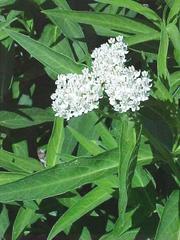
Asclepias incarnata – Ice Ballet Milkweed
‘Ice Ballet’ is an elegant, long-blooming, bright white cultivar of native Asclepias incarnata (Swamp Milkweed) and features a compact habit and dark green foliage. Swamp milkweed occurs throughout most of the United States. It is a tall plant found in moist habitats such as wet meadows, floodplains, riverbanks, pond shores, stream banks, wet woods, swamps, and marshes, although it will also grow in drier areas such as prairies, fields, and roadsides. Asclepias incarnata needs full sun or partial shade to flourish. Flowers are very attractive to butterflies and bees as a nectar source. Swamp milkweed is also an important food source for the larval stage of Monarch butterflies. The plants are deer resistant and heat tolerant.
Available – May 2017


